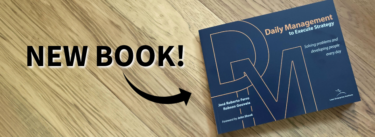For me and countless other fans, watching the TV show The Bear is time well spent. And “every second counts,” as the show keeps reminding us. If you haven’t seen it yet, stop reading and start watching—I’ll wait….
The Bear is a workplace drama set in restaurants. In season one, the cast struggles to turn around a failing restaurant. By season two, they’re opening a new one, and in season three, they’re striving for a Michelin star. The show’s authenticity lies in its honest depiction of restaurant life. Everyone involved, including customers, experiences ecstasy, misery, and tedium.
The extreme circumstances are perfect for a TV show, making for vibrant and engaging entertainment. But for people who work in the industry, such volatility takes a toll. As someone with over a decade of experience in food service and hospitality, I empathize with the characters’ predicaments. I kept wanting to share some practical know-how that the team could use to better manage through it.
A Kitchen Nightmare
The penultimate episode of season one, ‘Review,’ captures the chaos of a kitchen when things go wrong. It’s intense, to say the least. Clocking in at a mere twenty minutes, mercifully, the kitchen is overwhelmed by online orders following a positive review. It descends into pandemonium. The printer spews tickets non-stop, leading to yelling and clanging. Carmy, the head chef, goes ballistic. Someone even gets stabbed by a chef’s knife. Two staff members walk out.
Restaurants teem with humanity, for better and worse. Leading up to ‘Review,’ the staff had been coalescing as a team. While working together, personal connections were being made. But when things become more than they can handle—when the workload exceeds their capacity—the team’s cohesion unravels. It’s more than just a bad shift.
Admittedly, the scene depicted in ‘Review’ is extreme. But it’s not unusual for people to be overwhelmed by their work. In any workplace, balancing workload with capacity is hard. The question is, what can be done about it?
A Better Way
At a recent round table at Cornell University’s Nolan School of Hospitality Administration, I shared a story about a popular restaurant company in Boston. Like the restaurant in The Bear, one of the company’s kitchens was struggling with slow ‘ticket times,’ a measure of order to delivery. Lean thinking and practice led to a breakthrough. After failing to solve the problem by adding people and technology, they embraced the mantra “reach for your mind before your wallet” and tackled the problem anew.
First, they assembled a group of chefs, i.e., line managers and cooks. Problem solving would be a team effort. Then, starting with the customer, they determined that an order hit the bottleneck station every fifty seconds on average. Next, they figured out that cooking an order took about two hundred seconds. Simple math showed that four cooks were needed to keep up (two hundred divided by fifty). The trouble was only two cooks could fit at the workstation. Upon discovering this insight, the executive chef said, “This explains why our sauté cooks are never successful. It’s impossible!” Quality issues and high turnover at the sauté had frustrated him for years. He finally understood why.
The team ended up generating lots of ideas for improvement. The line cooks could handle some of the them, such as rearranging the station to minimize reaching and bending. The restaurant’s head chef could tackle others, such as redistributing the work so line cooks never had to leave their stations. The most ambitious ideas, however, such as changing the recipe and, therefore, the work, had to be the executive chef’s responsibility. It was a great example of collaborative problem-solving across levels, showing how lean can practically enable a team to improve their situation.
Ownership for Improvement
Some round table participants argued that the method doesn’t encompass all of a cook’s work, pointing out that they do more than fulfill orders. Others advocated using software to compile the data, run the calculations, and then tell management how many cooks are needed.
With all due respect, I believe these comments miss the point. A cook’s primary responsibility is to fulfill orders. It’s worth figuring out how they can do that successfully. Involving the team in that process—understanding customer demand, grasping the details of the work, and then calculating how many cooks are needed—fosters ownership and a sense of accomplishment. Plus, they’re not required to trust an indecipherable, if not hidden, algorithm.
The team in The Bear would benefit immensely from connecting production to demand, and then balancing workload with capacity. So would their customers. Food service and hospitality workers tend to enjoy serving others. Yet all too often, they struggle to do so effectively. Lean thinking and practice can help them make things better, making sure that every second counts indeed.
Building a Lean Operating and Management System
Gain the in-depth understanding of lean principles, thinking, and practices.







This article beautifully highlights how The Bear mirrors real-life kitchen chaos and the importance of lean thinking. Collaborative problem-solving and balancing workload with capacity are crucial lessons, not just for kitchens, but for any high-pressure workplace.
Thanks for the feedback, James. Agreed, the lessons apply to any workplace.